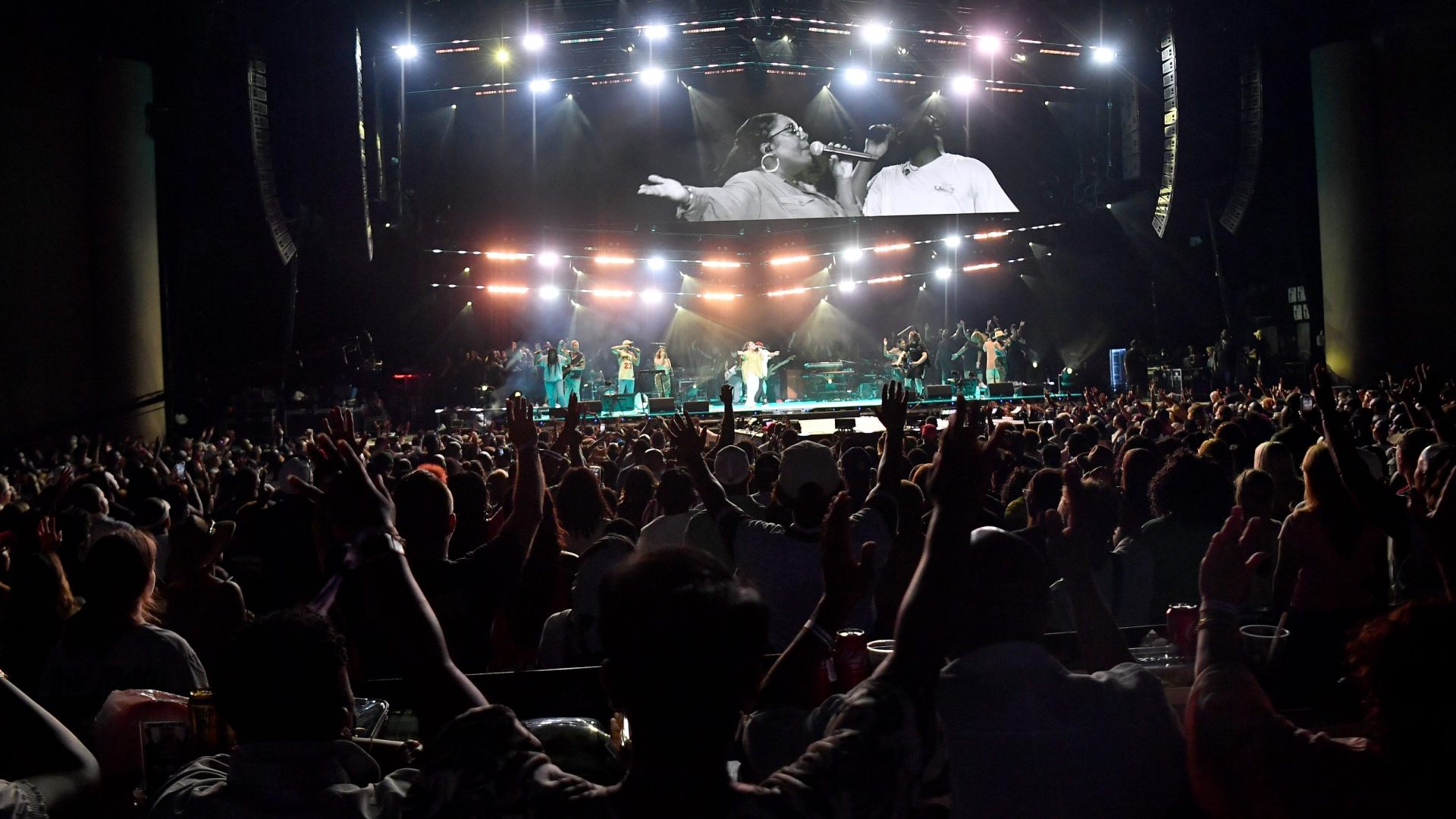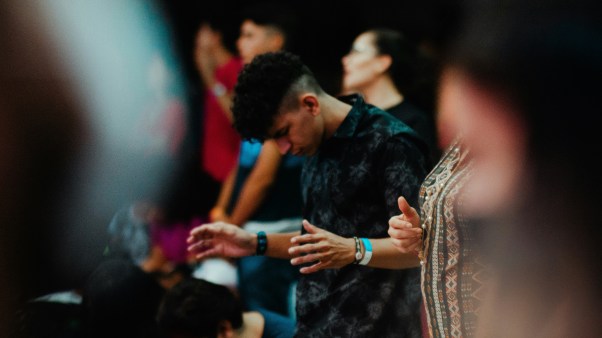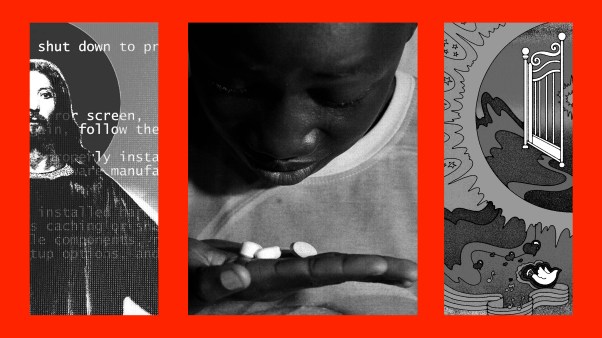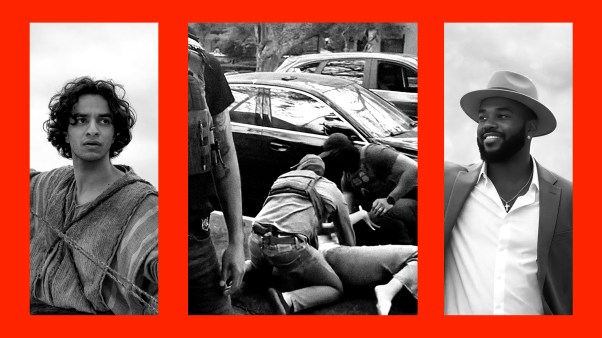Since its first album in 2019, Maverick City Music has been both praised and censured for its fusion of contemporary worship music and gospel.
The group took off with songs like “Jireh” and the Grammy-winning album Old Church Basement, collaborations with Elevation Worship that combined improvised vocals and tight choral harmonies from gospel music with the anthemic style of popular contemporary worship hits.
With over 3 million followers on YouTube and its consistent spot on the top of the Billboard Christian charts, fans say Maverick City Music elevates both contemporary worship and gospel genres. But critics worry that the group might allow distinct elements of gospel to become drowned out by the sounds of popular contemporary worship music.
“That fear is rooted in history, in a real erasure,” said worship leader and gospel artist Sarah Benibo. “Some fear that if Maverick City commercializes aspects of gospel, the genre will disappear.”
Norman Gyamfi, the music executive and marketer who cofounded Maverick City Music, stoked those tensions and fears this summer when he remarked that the group “outstreams the whole gospel industry” and suggested the decline of gospel music is imminent unless more artists start following in Maverick City Music’s footsteps.
In a podcast interview, Gyamfi criticized gospel vocalists for singing “too hard” and pointed out the relative lack of touring opportunities for gospel artists outside of the church circuit.
At a tumultuous moment in the music industry—artists and executives are trying to figure out how to capture a mass audience in an increasingly fragmented market—even the worship music niche is shaped by interest in profit.
But Black musicians and church leaders are cautioning against accepting the economic logic of the music industry as a way of determining which genres have more value to the church.
“Gyamfi is just doing what good businessmen do—trying to maximize profit,” author and musician Andre Henry wrote in response to Gyamfi’s interview. “But it doesn’t profit gospel music to gain all the white listeners in the world, just to lose its soul.”
From inside Maverick City Music, a collective of mostly Black singers and musicians, the mixed response to their popularity “felt confusing,” said Naomi Raine, a founding member known for her powerful vocals on songs like “He’s in the Room,” “God Will Work It Out,” and “Promises.”
“I think some of it is related to race, but we were also just so different. People don’t always appreciate ‘different,’” Raine told CT.
“We need all of it,” said Raine, referring to the array of music currently being produced by gospel and contemporary worship artists. “So I get sad and frustrated when I hear comments that put down certain movements or sounds.”
Unlike CCM, Black gospel predates the American recording industry. Its roots in African American spirituals and intersections with blues and jazz make it a distinct musical idiom.
CCM, on the other hand, is more of an industry than a musical genre. Contemporary worship music (now its own subgenre with its own characteristics and set of standard-bearers) has grown within CCM, adopting popular styles for use in music meant explicitly for congregational use and capitalizing on existing CCM infrastructure like Christian radio.
The racially divided audiences of gospel and CCM mirror systemic segregation in both the recording industry and in the American church.
From the manager’s seat, Gyamfi suggests that one style will inevitably overtake (or at least out-earn) the others when tracked by streaming numbers, touring revenue, and radio play. Pointing to successful worship artists like Chris Tomlin, Gyamfi said that contemporary worship music succeeds in the marketplace because it has met demand; it’s what people want to sing.
“Churches had stopped singing gospel,” Gyamfi said. “The churches that were growing were singing worship.”
It is true that in the US, churches seeing the most growth in attendance are megachurches, which are more likely to use popular contemporary worship music by artists like Tomlin, Phil Wickham, Elevation Worship, and Brooke Ligertwood. But services like Christian Copyright Licensing International (CCLI) that track the use of worship music overrepresent predominantly white churches, giving an incomplete picture of musical worship in the US.
Laser-focus on profitability, streaming numbers, and even CCLI charts can obscure the highly localized nature of congregational worship and the diversity of musical practices in American churches. It can also push corporate interests to disinvest from music that has value to faith communities, or pit musicians against one another.
“Art is about borrowing, commingling, and collaboration,” said Benibo, a former member of the gospel trio God’s Chosen and former Willow Creek Community Church campus worship leader. “As a businessperson, you might see this as a zero-sum game, but when we’re talking about worship, we’re not talking zero sum.”
Dwan Hill, a Grammy-winning producer and founder of The Choir Room, says that the context and culture of a local congregation determines what kind of music will serve the body. And the devaluing of gospel as a participatory musical tradition usually flows from misunderstanding and unfamiliarity.
“In the Black church, some songs are communal and some songs are individual,” said Hill. “Black churches have testimony services, services that start with someone singing, praying, and telling their story. Then we [the congregation] respond.”
Hill says that, for those outside the Black church—especially those whose exposure to gospel music has been through media like American Idol—the congregational aspects of gospel might not be immediately apparent. Participation in call-and-response and joining in a spontaneous chorus is a learned skill, one that is learned in community.
“Runs and complicated chords and percussion are all expressions of a heart pouring out a story,” said Hill. “Sometimes we need someone to sing with heart, soul, and gusto about what God has done to remind us that we need to respond.”
Eric McAllister, a worship leader and the creator of Sunday Morning Songs, says that Black churches have a different relationship with virtuosic solo singing than most predominantly white churches.
“Participation, particularly in Black churches, is not limited to singing,” said McAllister. “There can be full-body participation as you listen to and ‘amen’ that soloist. And that doesn’t feel like a betrayal of what the church is gathered to do. Listening can be participation.”
Hill and McAllister both pointed out that the role of the soloist in the Black church is often to testify to God’s work in their life and to lift up the whole community. Musical showmanship and excellence is part of that.
“Putting on our ‘Sunday best’ isn’t an expression of ‘look at me,’” said McAllister, connecting the emphasis on musical skill to the practice of dressing up for church. “It’s a way of standing in front of God in the fullness of my dignity.”
Benibo said, at its best, a rehearsed, impressive musical performance on a Sunday morning is a musical offering that blesses the congregation and leads them to respond in worship.
“When you bring a musical offering to the body, you have to have worked. When I offer it to the body and to God, I want you to hear that I’ve been practicing, because that’s how much this means to me.”
Differences in performance practices and norms can feed the perception that certain styles of music are fundamentally not congregational. But Geraldine Latty, a worship leader, choir director, and visiting scholar at Baylor University’s Dunn Center for Christian Music Studies, says that genre and musical style do not determine whether a song is congregational.
“Whether a song is too complex in rhythm or style is entirely subjective,” said Latty. “Usually, it’s not the song that’s the issue, it’s how it’s taught.”
Latty, who has worked with church and community choirs in the UK and the US for decades, says that the simplest song by Chris Tomlin or an exuberant choral arrangement of a Hezekiah Walker song can be equally participatory for a congregation.
“The question isn’t ‘Is it too difficult to sing?’ The question is ‘Does it have content I can connect to?’”
The success of Maverick City Music showed that audiences were excited to hear music that brings gospel sensibility to popular worship music. But their popularity isn’t necessarily a sign that gospel music needs to change or that contemporary worship music is better serving the church.
“We have to be able to say that Maverick City is doing something new and different,” said Benibo. “We are so afraid that our differences will divide us or that we will end up melting into each other. But if you have a different way of doing this, teach me. And I’ll teach you.”
















